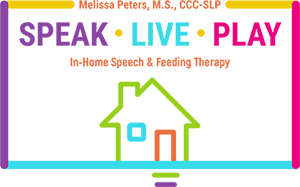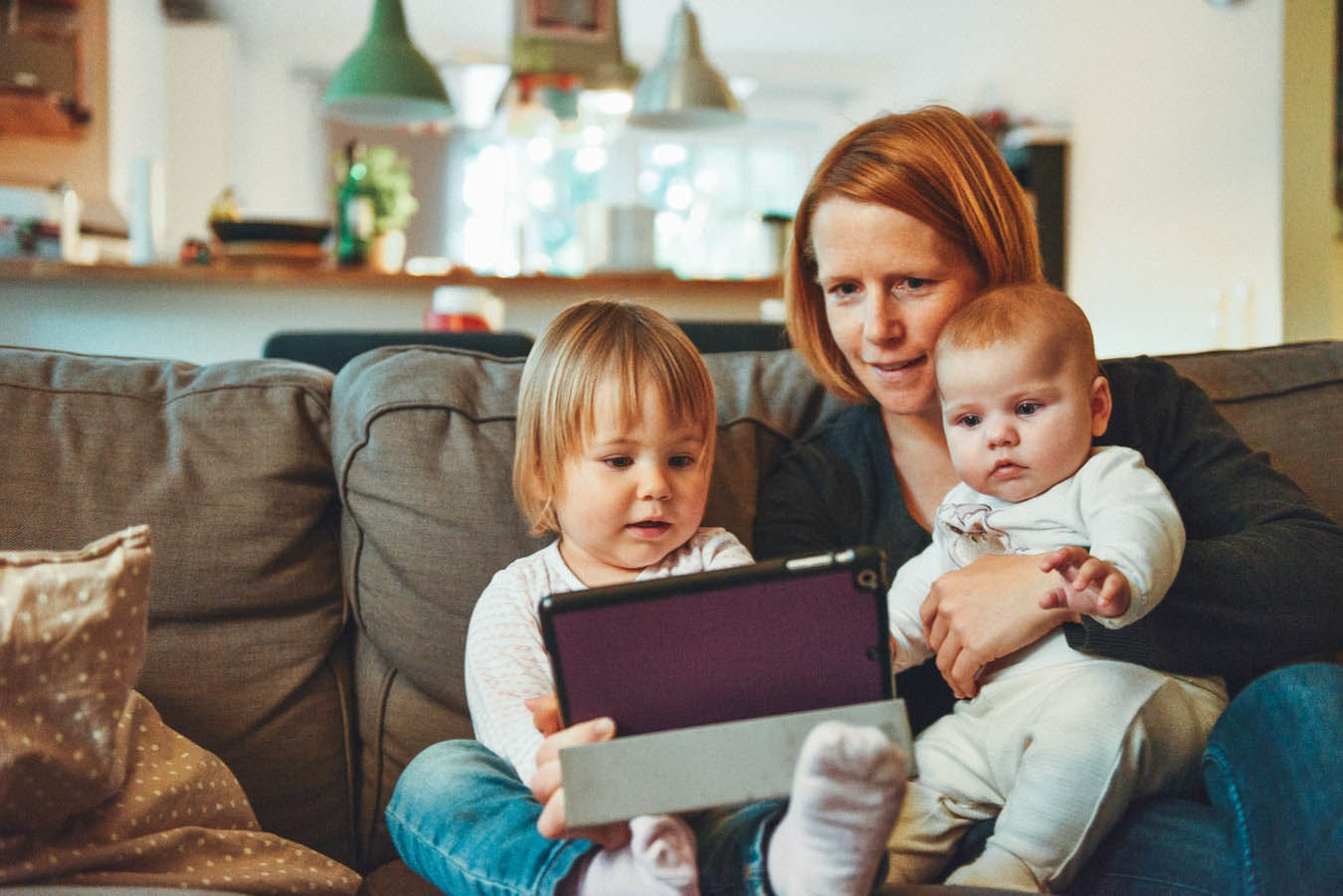What Is Teletherapy
In our increasingly digitally connected world, online therapy is revolutionizing how we connect and provide support. Therapy, too, has embraced the power of digital connection, enabling more people to access the help they need. Particularly in the era of Covid-19 and recommended social distancing, online therapy ensures safety while maintaining the continuity of our therapy sessions. Goode and Shinkle (2019) defined teletherapy as…
“Teletherapy is the online delivery of speech, occupational, and mental health therapy services via high-resolution, live video conferencing.”

Teletherapy – Online Therapy – Speak Live Play
Teletherapy, also known as online therapy, e-therapy, or video therapy, is therapy delivered through a virtual platform via a computer. If you’ve ever used FaceTime, Skype, Uber Conference, or Zoom, it’s essentially the same thing – except with a qualified speech therapist or counselor at the other end instead of a distant friend or relative. While it has grown in availability over the last few years, teletherapy has been around since the 1990s in the United States and is considered a highly effective method for therapy delivery.
Who is Teletherapy For?
Online therapy, also known as teletherapy, is beneficial for a range of people, for a diverse set of circumstances or experiences, including speech therapy, occupational therapy, and mental health therapy. It has been used for regular one-to-one therapy sessions but also used in group therapy sessions to support aging individuals diagnosed with HIV (Heckman et al., 2014). Another way online therapy has been used has been in the delivery of behavioral training to caregivers of young people with attention deficit hyperactivity disorder (Tse et al., 2015). It is worth noting that online therapy will not prove beneficial for all individuals in all circumstances. Many therapists recommend this as the first step towards therapy, especially for those seeking it for the first time and encourage participants to have open conversations with their therapist over whether this is the best pathway of support for them (Novotney, 2017).
How Do Online Therapy Sessions Work?
Teletherapy sessions work much the same way as traditional therapy sessions with only one significant difference – the therapist and the client are not in the same room. Sessions are scheduled at an appropriate and suitable time and day for each party, who then log-in via an agreed, secure video platform. The therapist and client can see and hear each other in real-time during the session via the use of webcams and headsets. Through this virtual environment, they can interact with each other, and the therapist uses the same traditional techniques and activities they would use in a face-to-face therapy session (Goode and Shinkle, 2019). As with face-to-face therapy, a client may only seek out the therapist for one session to deal with a current life situation or they may agree to on-going sessions.
Are Teletherapy Sessions Private?
When it comes to online therapy, therapists are ethically and legally bound by privacy laws to not share details about their teletherapy sessions with third parties, just as with face-to-face sessions. Therapists must ensure they are in a private and secure room before engaging in any teletherapy sessions. Sessions should not be recorded or shared unless with explicit agreement from the patient or patient guardian. From the patient’s end, it is also down to them to ensure they conduct their end of the session in an equally private area to ensure their confidentiality. Some therapists have argued that teletherapy is more private than traditional face-to-face sessions, where patients who know each other have the potential to bump into each other on the premises where therapy takes place. In terms of the security of the software used, therapists utilizing teletherapy must use specialized software that is fully encrypted, offering a high level of security and privacy. Any software that therapists use for online therapy must be approved by the Health Insurance Portability and Accountability Act of 1996 (HIPAA). This is legislation that ensures data privacy and security for safeguarding medical information, including therapy.

Teletherapy – Online Therapy – Speak Live Play
Is Teletherapy as Effective as Face to Face Therapy?
How effective teletherapy is, really depends on the individual and their reasons for seeking therapy. Since it first began to be used as a treatment method more than 20 years ago, psychological research has explored the different ways teletherapy has been used, and it’s effectiveness. Overall the research does support that teletherapy is just as effective as traditional face-to-face therapy for a range of circumstances. A few key studies include:
- Wagner, Horn, and Maercker (2013) explored the benefits of teletherapy for supporting patients diagnosed with depression. Sixty-two patients were randomly assigned to two groups – one receiving teletherapy and the other receiving more traditional face to face therapy. The patients received eight sessions each, and at the end of their sessions, the group who received teletherapy showed a slightly higher percentage of reporting fewer depressive thoughts and feelings. After three months, the teletherapy group continued to report a decrease in depressive thoughts and feelings, compared to those treated traditionally who reported a minimal decrease.
- Acierno et al. (2014) studied the benefits of teletherapy for use in therapy with veterans experiencing PTSD. They worked with 132 veterans, asking them to complete a scale to measure PTSD and then randomly assigned them to one of two groups to receive 10-12 sessions of either face to face therapy or teletherapy. After three months and six months, respectively, the participants were asked to complete the PTSD scales again. At both points, the researchers found that those who were treated via teletherapy showed similar improvement to those treated face-to-face.
- Mitchel et al. (2008) worked with trained therapists to see if teletherapy could be effective with the treatment of patients experiencing bulimia nervosa. One hundred twenty-eight adults diagnosed with bulimia nervosa took part in the study and were randomly assigned to receive therapy either face-to-face or via teletherapy. Participants were asked to report if they were still participating in bingeing and purging behaviors after the initial sessions ended, three months later and twelve months later. The researchers found extremely minimal differences in recovery between the two groups.
Research to date shows very promising effectiveness for teletherapy, however many therapists stress that one of the critical components for successful therapy is the relationship between patient and therapist, and in-person connections can be vital for successful treatment. For individuals who experience difficulty forming relationships or struggle with social interaction, traditional face-to-face therapy could be more beneficial in overcoming these challenges.
4 Benefits of Teletherapy for Patients
Aside from its equal effectiveness as a therapy treatment, there are many other benefits to teletherapy for patients seeking it out. A few notable ones include:
1. Accessible to More People For individuals living in high traffic metropolitans like Los Angeles, Chicago, and New York where it consumes too much of your time for an in-office visit. For individuals living in rural communities, living with a disability that makes travel difficult, or those who are just unsure about trying therapy for the first time, teletherapy is a highly beneficial option. Teletherapy removes many of the barriers – physical, emotional, or mental – towards seeking out therapy and makes it accessible for more people. Research has found that those who participate in teletherapy are also more likely to seek out face-to-face therapy as a result of a positive experience (Jones et al., 2014).
2. Offers Greater Flexibility It’s easy to put off attending therapy when sessions are offered during limited office hours. For many people who already have a lot of commitments to juggle, seeking out this form of support can easily be bumped down the priority list. When a therapist can be readily available at a time that suits the patient, it offers greater flexibility and could even encourage more people to seek the right support when they need it most.
3. Reduced Wait & Save Times It might seem like a small benefit, but increased flexibility also means reduced waiting times for patients wanting to speak with a therapist urgently or for the first time. It can take a lot of courage making an appointment for therapy, and the less time someone has to wait, the more likely it will be they’ll follow through and get the help they need. Taking time off from work to battle traffic while going to the therapist, wasting even more time in the waiting room, having the session, and then battling traffic to return to work, is also a huge deterrent to many. Being able to brew a quick coffee, step into a private room for the scheduled therapy session, and ready to return fairly soon to ‘work-mode’ is a much more viable solution for many office workers.
4. Creates a Safer Environment That feeling of anxiety many experiences when sitting in the waiting room of the dentist or doctor surgery? It’s the same anxiety experienced when waiting for a therapy session. The process of going to a new environment to meet with a therapist can be a stressful one. Teletherapy alleviates this stress by allowing patients to familiarise themselves with the process in the comfort of their own home.







